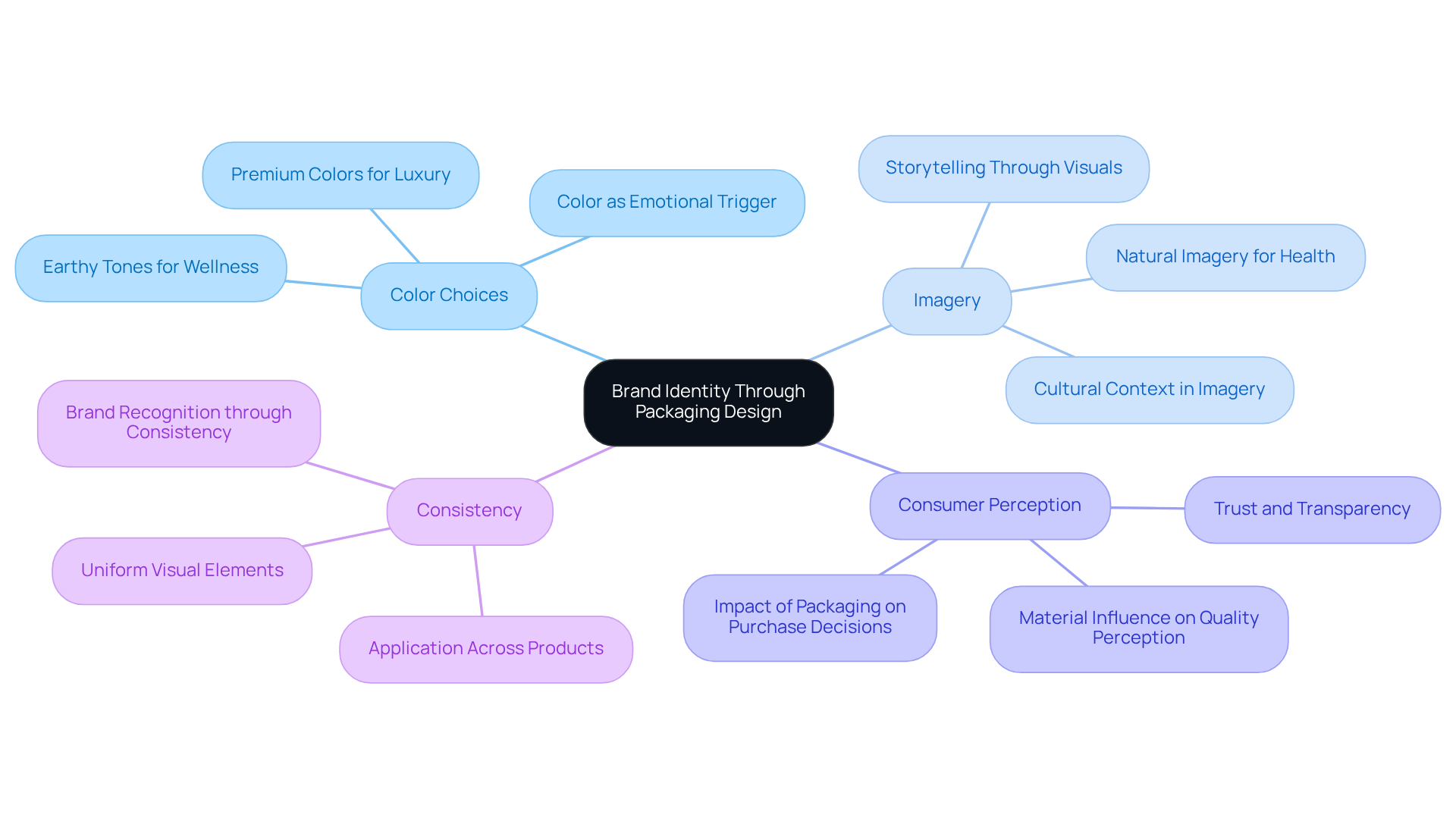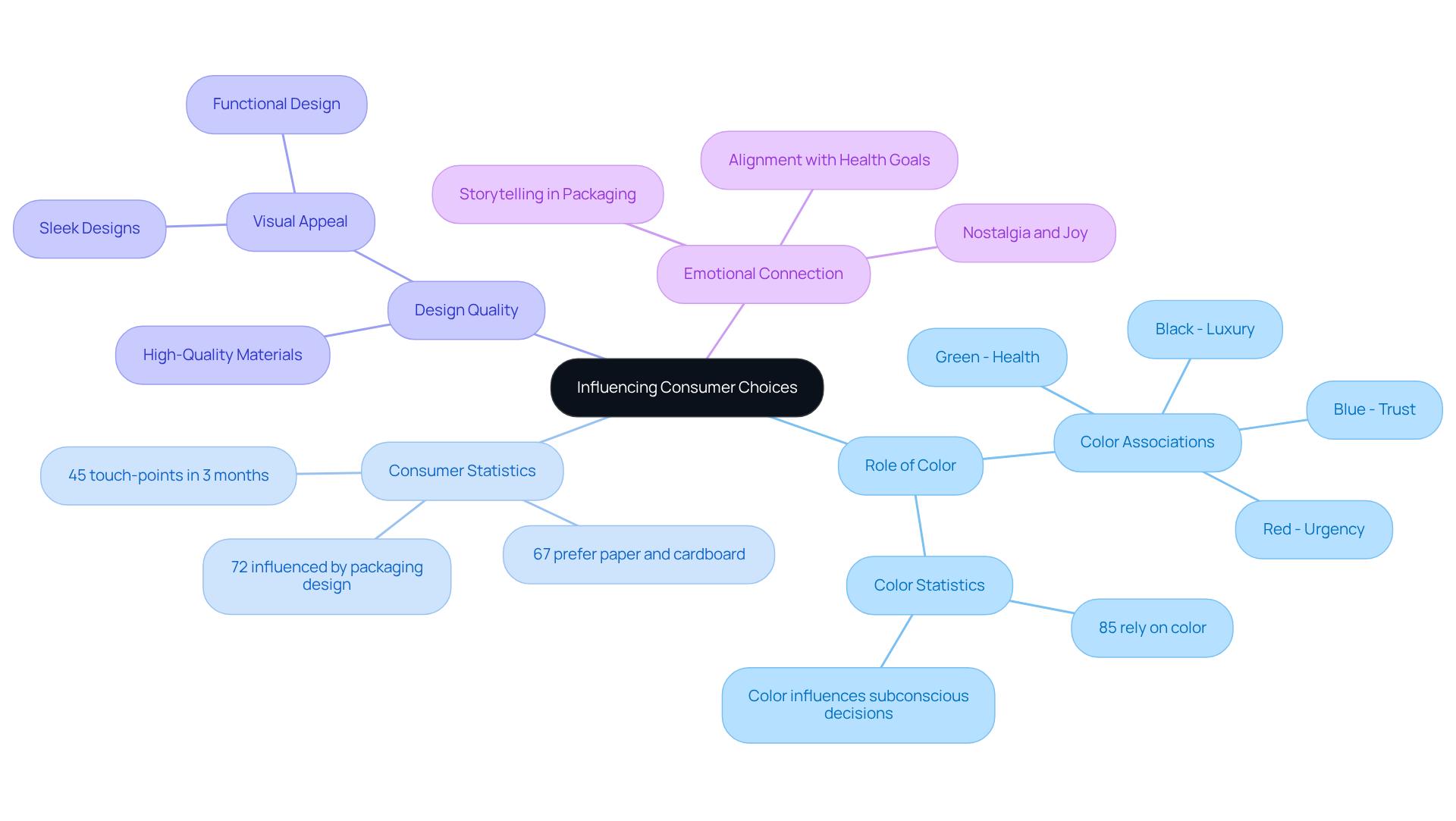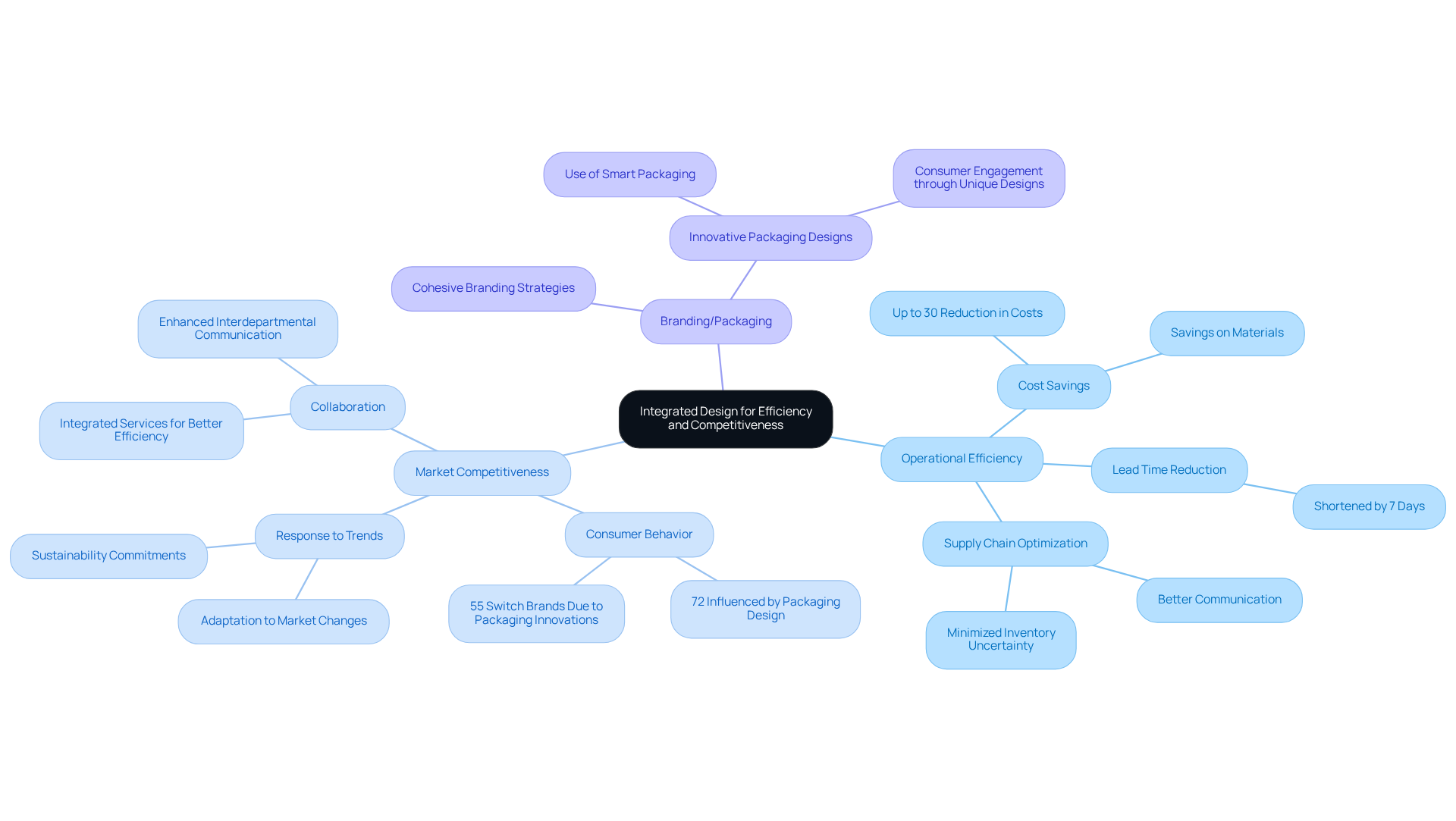Overview
Branding and packaging design wield a profound influence on consumer choices, acting as a strategic instrument that articulates a company's identity and shapes perceptions through elements such as color, quality, and storytelling.
Notably, 72% of American shoppers recognize the impact of branding and packaging on their purchasing decisions. This statistic underscores the psychological effects of design elements, which play a crucial role in fostering emotional connections and enhancing market appeal.
Such insights highlight the necessity for businesses to prioritize effective branding and packaging strategies.
Introduction
Branding and packaging design are pivotal in the consumer marketplace, serving as the visual language through which companies convey their identity and values. In a landscape teeming with choices, the presentation of a product can decisively influence a consumer's decision. This article explores the intricate relationship between packaging and consumer behavior, highlighting how strategic design choices not only bolster brand recognition but also forge emotional connections that sway purchasing decisions.
How can brands effectively harness the psychological impact of packaging to distinguish themselves in a saturated market and cultivate consumer loyalty?
Establishing Brand Identity Through Packaging Design
Branding and packaging design transcends mere aesthetics; it serves as a strategic tool that articulates a company's identity and values. In the current competitive landscape, where consumers are inundated with choices, effective presentation can significantly influence how a label is perceived.
For instance, a nutraceutical company utilizing earthy tones and natural imagery in its packaging conveys a message of health and wellness, appealing to individuals who prioritize their well-being. This connection between product presentation and corporate identity fosters trust and recognition, simplifying decision-making for shoppers when faced with alternatives.
Moreover, the consistent application of visual elements such as symbols, colors, and typefaces across all packaging enhances identity recognition, ensuring that consumers can easily identify the product on the shelf.
Research indicates that brands with strong visual identities are more likely to be remembered and preferred by consumers, underscoring the importance of intentional packaging design in establishing a brand's presence in the marketplace.

Influencing Consumer Choices: The Psychological Impact of Packaging
The psychology of branding and packaging design is pivotal in shaping buyer decisions, serving as the initial point of contact between a product and a prospective purchaser. Effective composition significantly influences perceptions, with color playing a vital role in evoking emotions. For instance, blue is frequently associated with trust, while red can instill a sense of urgency.
Studies indicate that approximately 85% of buyers rely on color alone for their purchasing choices, underscoring the importance of strategic color selections in product presentation. Additionally, 72% of American shoppers recognize that branding and packaging design greatly influences their buying decisions, highlighting the essential role of wrapping in buyer choice.
The materials and form of containers also contribute to perceived quality; products presented in sleek, high-quality branding and packaging design are often regarded as more valuable than those in basic designs. Furthermore, branding and packaging design that narrate a story or embody the values of the company foster emotional connections, encouraging individuals to favor those products.
This emotional involvement is particularly crucial in the nutraceutical sector, where consumers prioritize products that align with their health and wellness goals. By leveraging psychological principles in product presentation, including the rising trend towards earthy tones and pastels, brands can significantly enhance their market appeal and influence consumer decisions.

Enhancing Operational Efficiency and Market Competitiveness Through Integrated Design
A cohesive strategy for container creation and logistics significantly enhances operational efficiency and market competitiveness. By merging container aesthetics with filling services and third-party logistics, companies can optimize their supply chain operations, thereby effectively shortening lead times and reducing expenses.
For instance, Western Packaging & Distribution exemplifies this integrated model by providing comprehensive solutions that span from planning to distribution. This holistic approach enables companies to concentrate on their core strengths while ensuring that their containers meet both aesthetic and functional requirements.
Moreover, integrated design promotes better communication and collaboration across departments, leading to more cohesive branding and packaging design strategies. As competition intensifies in the market, firms that embrace integrated solutions are better equipped to respond to customer needs and market trends, ultimately driving growth and profitability.
Notably, the combination of materials and distribution can yield cost savings of up to 30% and decrease the order-to-delivery cycle by seven days, as emphasized by Inbound Logistics. Additionally, a report by WestRock reveals that 55% of consumers have switched brands due to innovations in branding and packaging design, highlighting the pivotal role of packaging in shaping consumer behavior. This evidence underscores the tangible benefits of adopting an integrated approach.

Conclusion
Branding and packaging design are pivotal in shaping consumer perceptions and choices, extending beyond mere visual appeal to function as strategic tools that communicate a company's identity and values. In a marketplace overflowing with options, the presentation of products can profoundly influence how consumers perceive and select brands. Effective packaging not only fosters recognition but also builds trust, simplifying the decision-making process for shoppers.
This article explores the psychological impact of packaging, emphasizing how elements such as color, material, and storytelling can evoke emotions and sway purchasing behavior. Research shows that a significant percentage of consumers depend on visual cues when making decisions, underscoring the necessity for brands to invest in thoughtful and intentional design. Additionally, integrating branding with operational strategies enhances efficiency and competitiveness, illustrating that cohesive design can lead to substantial cost savings and improved market responsiveness.
Ultimately, grasping the intricate relationship between branding, packaging, and consumer choices is essential for businesses seeking to excel in a competitive landscape. By prioritizing effective design strategies that resonate with consumer values and preferences, brands can enhance their market presence and cultivate lasting connections with their audience. Embracing this approach is not merely a choice; it is a fundamental necessity for success in today’s dynamic market environment.
Frequently Asked Questions
What is the role of packaging design in branding?
Packaging design serves as a strategic tool that articulates a company's identity and values, influencing how a label is perceived by consumers.
How does effective packaging design impact consumer choices?
Effective presentation can significantly influence consumer perceptions, fostering trust and recognition, and simplifying decision-making when faced with product alternatives.
What elements in packaging design can convey a brand's message?
Visual elements such as symbols, colors, and typefaces can convey a brand's message and enhance identity recognition.
Why is consistency important in packaging design?
Consistent application of visual elements across all packaging enhances identity recognition, making it easier for consumers to identify the product on the shelf.
What does research say about brands with strong visual identities?
Research indicates that brands with strong visual identities are more likely to be remembered and preferred by consumers, highlighting the importance of intentional packaging design.




